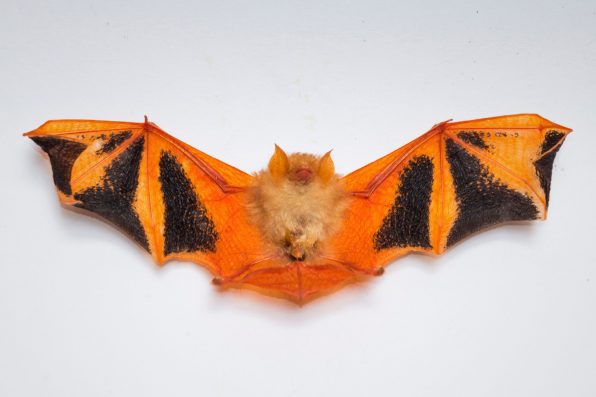The wildlife trade is a major issue that affects biodiversity conservation. Although it is a significant part of the global economy, putting a price on species can only lead to devastating population declines.
Many wild animals are killed for their body parts or smuggled out of their native habitats for long distances, causing pain and suffering.
One of these animals is the painted woolly bat. The bats are collected and killed for their striking black and orange coloring. Then, they are sold as decor around the world. The United States has been a growing market for this trade.
Over the years, the U.S. has imported hundreds of painted woolly bats. They are not bred in captivity; all the bats are captured in the wild.
Their numbers have been declining to the point where the International Union for Conservation of Nature has listed the species as “near threatened.” Their conservation status is expected to worsen with the rise of global e-commerce. They also produce only one offspring at a time, so they are especially vulnerable.
You can purchase painted woolly bats as jewelry, jarred specimens, or Halloween decorations on several online sites, such as eBay, Etsy, and Amazon. They are also framed so buyers can mount them on the walls of their homes.
“Painted woolly bats should be flying free in their native forests, not nailed to a wall in the United States,” Dianne DuBois, a staff scientist at the Center for Biological Diversity, said. “I hope U.S. officials act quickly to protect these unique and beautiful bats so they can recover and flourish.”
Painted woolly bats are about as long as a finger. They are sought after for their orange and black wings and long, woolly fur. The bats live in China, Cambodia, Laos, Vietnam, Thailand, Myanmar, Nepal, India, Bangladesh, and Sri Lanka, where they roost in leaves and hunt for insects in fields and forests.
Researchers from the University of California, Davis, and City University of New York-Queens College led the first comprehensive study of the ornamental trade of a bat species. They found plenty of evidence that showed how trade is negatively impacting painted woolly bats.

Sign up for Chip Chick’s newsletter and get stories like this delivered to your inbox.


